Birdingpals Trip Report
Trip Report Dandeli, Karnataka – November 2005 Sri Lanka
The Trip
Nov 05
Nov 06
Nov 07
Nov 08
Nov 09
Nov 10
Nov 11
Nov 12
Nov 13
Nov 14
Nov 15
Nov 16
Nov 17
Nov 18
Nov 19
Nov 20
Nov 21
Nov 22
Nov 23.
Nov 24
Nov 25
Nov 26.
Nov 27 Trip Report Dandeli, India – March 2005
by Birdingpal Adesh Shivkar
Click here to find Adesh's Trip Reports.
You may also want to see Adesh's exelent report from the land of the Great Indian Bustard.
Trip Report India and Sri Lanka – November 2nd to December 3rd, 2004 by Knud Rasmussen
My journey to India and Sri Lanka to meet the local Birdingpals India
A couple of years ago I went birding with Ameen Ahmed a Birdingpal from India, who had moved to Toronto to complete his education. Looking for gulls in the Hamilton Harbour, Ameen was making notes and a piece of paper fell out of his note book. I picked it up and noticed it was a photo copy of paw prints. I asked my friend why he carried such information when he went birding, he pointed to the largest paw print and explained that birding in India, there is a change to run into tigers, so birders check fresh paw prints. This got me thinking that it would be great to combine a little danger with birdwatching and I started planning my trip . Since I like to mix my birding with experiencing the local people, culture, food and history, India soon had me excited.
I live in Toronto, which likes, to portray itself as the most multi-cultural city in the world and we take it for granted that we can experience hundreds of different cultures in our own city any time we want. I like such an environment and researching India, I realized that it has been multi cultural for much longer than we have and my mind was made up to visit.
India is a large country and from my experience in Argentina last year, I quickly realized that I would only be able to see a small part during the time I had allocated to the trip. I decided to start off in Mumbai, a large city, and then work myself down the west coast and into the Western Ghats to Thiruvananthapuram.
With much advice from my friend Ameen and other local Birdingpals I began to fine tune the trip. Transportation was a concern right away. Renting a car would of course give me the flexibility to go anywhere I wanted but I did not want to drive (on the "wrong" side of the road) myself. Trains are quite good in India and so is the bus service, but an awful lot of time is wasted. Since I wanted to see as much as possible, I began to think about hiring a car and driver. It is very economical in India where labour is still very cheap compared to North America and Europe, but to find the right driver and car is not simple. The wrong choice and the trip could easily be ruined. It’s not only a driver, but also some one you can trust to drive in a safe manner, who know the local ways, and canprovide some security and maybe be a companion. Ameen’s farther provided invaluable help. He looked after a proper vehicle, selected Babu the driver and he made sure I paid a fair price. The total cost for about three weeks came to approx 50 000Rs including fuel.
Roads in India are generally not in the best shape and very few motorways exist (and the ones we did drive on still had cars and oxcarts driving in the wrong direction along with people and live stock wandering around). It’s a good thing that Indians in general do not drive fast, otherwise there would be a bloodbath. I think it’s fair to say that if you are told it takes two hours to drive to a place, you can double it and add an extra hour to be on the safe side. The only real negative thing I have to say about India, is the terrible air pollution in the cities, big and small. Any one, who does not think pollution is a problem, and clean air the right of all living beings, should spent a day or two driving in India. That would ensure, that everything possible, would be done to fight air pollution and global warming. I was told that the places I visited are not the worst ones, and I must say, I would hate to visit any of them.
Since India has not only many languages but also many different scripts, signs can be a bit of a problem, but we did manage in general and our driver found places he never new existed during our trip.
A lot of Indians speak English, but but it is not something to be taken for granted outside the cities. As you go from one state to the next, language will also change and I found out about that, when we crossed into the state of Kerala, where Babu the driver could not understand the locals even if he spoke Urdu, Hindu, Kanata and a little English, but we still made it without real problems.
During the entire trip, I ate the local food and soon learned to eat with my fingers since few places had cutlery. Food was very good (no junk food), mostly vegetarian and not expensive even in the better hotels. During most of the trip I drank bottled water (still wondering why Coca Cola has to sell water in India), but a few times I did drink the local water and did not I get sick. I could have been just lucky since I had been warned by many people (Indians included) to be careful, but neither food nor drink created any problems. Maybe because I like and eat spicy food!
Lodging ranged from somewhat primitive to western type hotels and all very reasonably priced. Hot water is not always available, but you soon learned to use the cold water. It’s not really cold and a bucket works just as well as a shower head.
Most westerners, I think, believe India is poor and backward, but that is not the case at all. You do see terrible conditions for some people living in the big cities, but they also have all the amenities we take for granted. All you need is a little money, education and a job. India is a country on the move and fast.
Being so close to the end of the trip it made a lot of sense to fly to Sri Lanka and spend a few days there and I am glad I did. In many ways it’s like India, but roads and infrastructure seems to be some what better. Sri Lanka is a small country compared to India and has only 19 million people, so they do not have the same population pressure. Environment and pollution are not as much of a problem as in India, but it’s also a lot more expensive to stay at hotels, eat out and rent transportation. The security problems that used to plague Sri Lanka where not much in evidence where I went.
To purchase Sounds of Sinharaja CD contact Birdingpal Prasanjith Caldera
![]()
During the trip I met many locals, and I do not think you will find many places where people are more friendly and hospitable than in India and Sri Lanka. Everyone went out of their way to help, and I hope one day I can offer them the same, should they ever visit my part of the world.
Oct. 24 to 31
On the way to India I stopped over in Denmark to visit my sister and her family, but also found time for a little birdwatching.
I left Toronto late Sunday and flew into Heathrow airport the next day. I took a bus to Gatwick to catch a flight to Denmark and arrived there minus my suitcase and it took four days to get it. My malaria pills where in it, so I was way behind in taking my medication, however I have been home for some time and I still have no symptoms. I guess I am safe.
I did not have much time, but managed to go birding a couple of times, both to wetlands being restored to the way they used to be many years ago. William Fabricius, a local Birdingpal from Haderslev in southern Jutland, was kind enough to bird with me at Slivsø. After many years, this wetland is again being returned to its natural state and William has been keeping a check list on the birds found there again. I happend to discover a new one for him, a Scaup (Canard milouinan) since it looked like the North American Greater Scaup, which I did not think would appear in Europe. Besides the regular fall birds I also saw many Northern Lapwings.
I finally got my missing suitcase four days after I arrived in Denmark and was able to take my Malaria medication, distributed my gifts to the family, and by the way, my sister made sure I had the famous Danish “Smørebrød” with beer and snaps every day I was there.
I left Denmark on Oct 31 to fly back to the UK and stayed at a hotel close to the airport, since I was leaving early the next morning.
On my return to England I did a little birding walking in the neighbourhood of my hotel in London, and was surprised at the number of Magpies I saw.
Nov 01
I boarded a Kuwait Airline plane to Mumbai and was a bit surprised at the lax security, compared to what we must suffer through here in North America. My seat companion was a gentleman from the Maldives living in London but going to New Delhi to finalize his marriage and return with his wife. He was somewhat amused, when I told him I was going to India to look for birds but we had a pleasant conversation.
Nov 02
Arrived in Mumbai 0520 (a terrible time to start off in a strange country). I cleared immigration and customs quickly and bought a ticket from an agent inside the terminal to get a taxi to my hotel. I realized why, after I got outside the terminal building where everyone wanted me to take their taxi. My driver soon found me; how, I don’t know. I got into the taxi and the driver told me to wait, since he had to go and get his money from the agent. He returned and we started to drive. We stoped and a second person got into the front seat. "My cousin" the driver explained and asked me if I minded. A bit odd, but what can I say? and off we go to my hotel. We still had to stop at a gas station to get fuel, not quite the taxies I am used to, but in Rome do as the Romans do. It’s was still dark with little traffic, but many people where walking the streets on their way to work, plus all the ones who make their home on the street. It's a bit overwhelming, but I guess that is India. We finally arrived at the hotel and I checked in and went to bed to try to get some sleep. Shelley Hotel located close to the Gateway of India, was not a five star hotel, but it was clean and the price was reasonable by Mumbai standards.
I must say it was quite a culture shock to go from a small and very organized Scandinavian country and then arrive in Mumbai, where every month 200 000 new people arrive without any work or place to live. I thought I was prepared, but here everything is right in your face, where we in the west keep most problems well hidden in order not to offend any one.
I woke up at noon and had my first Indian breakfast eating with my hand. Then off to Victoria Station the central railway terminal to confirm my ticket Took a taxi and the driver wanted 100Rs but the hotel staff told me it should be 50Rs. My first lesson on bargaining in India. Better get used to it; I thought I would be prepared for downtown Mumbai but I think you have to see it to really believe the humanity, traffic, cows, smells etc. Found an internet café to check my email and tell my family and friends I have safely arrived in India and I am ready for my “adventure”. Back to the hotel for an early dinner.
Nov 03
I hire a car and driver for 2400Rs for the day and set off early to meet Venkat Krishnan a local Birdingpal, who goes out of his way to help. First we stopped and he bought breakfast in his local restaurant and then we where off to the salt water wetlands north of the city. Venkat was an excellent birder and he knew the local spots. We saw mostly waterfowl including Greater Flamingoes, but also raptors, some warblers and two White Storks, rather unusual for this part of India. This is the first White Stork I have seen in many years, but I remember seeing them as a kid in Denmark, when they where still quite common, and nested on the chimneys of farms. Venkat had to go back to work but he kept putting it off and hopefully his boss understands, that it is easy to get carried away when you are birding. The traffic and air pollution are horrendous driving back to Mumbai.
This is the month of Ramadan for the Muslims and we visited the Haji Ali’s Mosque on the way back. It was very crowded and many vendors and beggars lined the causeway.
This is my last day in Mumbai. I will board the over night train to Goa from Victoria station tonight. The station is very crowded with people camping all over the floors, but I find the platform from which the train leaves. I met some people living in Toronto who was also waiting:
A small world.
A first class ticket cost about 2000Rs and it would be interesting to see what it would be like to travel on rails in India. I board the Konkan Kanya Express and I am off on time. A first class ticket is in a compartment with seating for four, which will be turned into four bunk beds as soon as we leave. I did manage to sleep most of the night. It's best to always make sure to make reservations prior to leaving, since the trains are almost always full. www.indianrail.gov.in
Nov 04
Arrived in Goa in the morning about an hour late and was met by Ameen’s farther and Babu, who will be the driver all the way to Thiruvananthapuram. Babu’s English is limited, so it’s going to be a bit of a challenge, but he is friendly and has a sense of humor, so we will make it.
I am staying at the Panjim Inn www.panjiminn.com/ a friendly and comfortable place to spend a few days at a reasonable price (1180Rs per day) but it also has a much fancier place across the street if you want to spent the extra money. Its restaurant is good serving local dishes and you can get a bottle of Kingfisher, an Indian beer.
Did a bit of birding in the nearby tidal ponds and made arrangement with Gordon Frost, a local guide to go birding the next morning. (350Rs per person incl. transportation) since I was not able to contact the only Pal I had listed in Goa
Panaji is like a European city with narrow streets, many small shops and bars. The first night walking down to the main street to have dinner, I passed a small house where a violinist was practicing Mozart in front of an open window. A quiet, but interesting little town to spend a few days in.
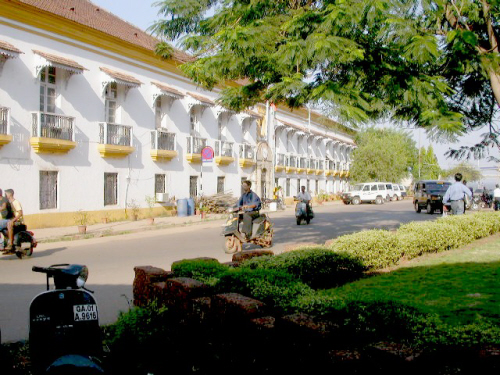
MG Road, Panaji
Gordon picked us up early in the morning and the first stop is a roosting place for Fruit Bats and then off to Tivim (Damadem) for some forest birding, giving me an indication of what’s to come for most of the trip. Had 49 spices of birds and most of them new to me plus Common Langur and Three-striped Palm Squirrel.
Late in afternoon I visited Cabo Raj Bhavan, a fortress built by the Pourtuguese, located close to the University of Goa and a place for local people to enjoy the the ocean and the Mandovi River view
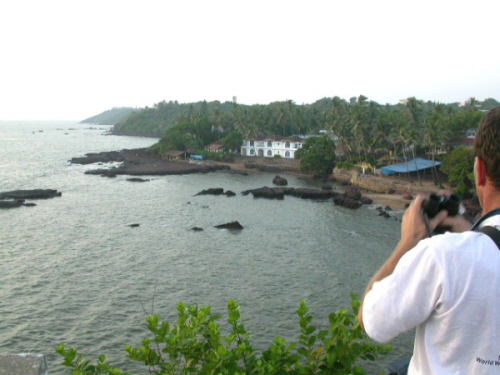
View from Cabo Raj Bhavan
After breakfast Babu drove me to the beaches south of Panaji to Cavelossim. Most of it is very touristy with many British and East European charter travelers. The beach and sea are beautiful but in some way spoiled by many hawkers and other characters constantly trying to flog their wares and services.
Fishing is still done the old way in open wooden boats, which they haul up on the beach when not on the water. Met my first elephant begging for money on the beach. No gulls or other sea birds. Just a few Brahminy Kites patrolling the water and many crows.
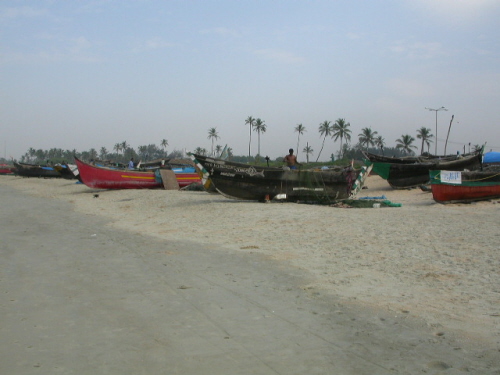
Fishing boats on the beach
Babu told me the road I thought we should take to Dandeli is very bad and talk me into driving south until we reach Kanartaka and then turning east towards Dandeli, a much longer way. The roads are not too bad but as soon as we reach Karnataka and turn east and up into the, we encounter very slow and heavy truck traffic, making for slow driving. The trucks come down from the iron ore mines to the waiting ships in Karwar. They all look overloaded and we see many accidents and broken down trucks on the way up. The four hour drive turns into more than 8 hour before we reach the Bison Resort in Dandeli just before darkness.www.nivalink.com/bisonriver/
is a small forest resort located on the river Kali.
After checking in, I discovered I had company in my room; a small lizard living behind the tiles in the bath room. I decided it probably kept the mosquitoes away and it could stay.
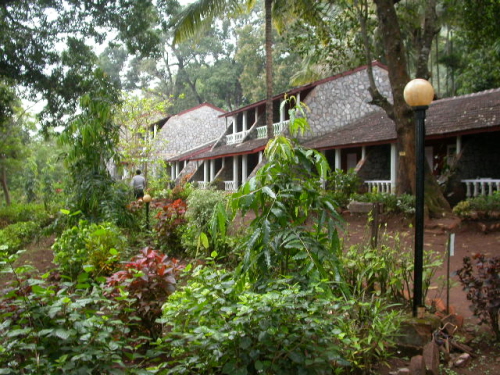
Bison Resort, Dandeli
Birded the road to the Bison Resort with their resident Birding guide and added a few new birds to my list. After having made arrangements the night before to meet Vijay Kumar, a local Birdingpal, we set off after breakfast to meet him and while under way, we see many monkeys crossing the road as well as the first Peafowl. Vijay turned out to be the Deputy Conservator of Forrest Wild Life at the Dandeli Wildlife Sanctuary and I met him at his office. After tea he invited me to come with him in his car to visit a local lake and wetland for some birding. It was excellent, with several new birds added to my list.
Returning to the sanctuary offices, where I was introduced to Aranya Bhavan, the Chief Conservator of Forrest Wild Life for the state of Karnataka and all the deputies from the state parks and sanctuaries. It was very interesting to hear them talk about their work protecting wild life and fauna and we ended up having a late lunch there.
I then went to visit the Kali Wilderness Camp (a Government of Karnataka Undertaking) where I met M Yuvaraj, the resident manager, and V Kamat who showed me the facilities. A place well worth visiting. More information by going to www.junglelodges.com/
I think Dandeli has excellent birdwatching and is well worth a visit.
Back at the resort having dinner, I discovered that India is a wine producing country and had to try a bottle with my meal. White only and drinkable, but I think, I will take the wine I had in Argentina last year, given the choice.

Vijay Kumar the local Birdingpal at the Forest Station

Laundry woman and water Buffalos share the birdwatching
Before leaving for Tumkur, I went on a river Coracle Ride (a round water vessel paddled by two guides) on the Kali River and saw several female Peafowl (India’s National Bird) in a tree.
After breakfast we hit the road for the long drive to Tumkur. The habitat soon changed dramatically, with most land cultivated and many large plantations and little wild life to see. A lot of the route was on a "divided" highway which had been under construction for many years, and was still only partly finished. Heavy traffic with slow moving trucks, oxcarts and the usual livestock wandering around made it a good eight hour trip before entering Tumkur.
I was Greeted by Ameen’s farther and Guru Prasad, a local Birdingpal and friend of Ameen, who took us to Namada Chelume guest house in the Devarayana Durga Forest Sanctuary near Tumkur, where I would be staying. All this was arranged by WANC, the local Bird Club
Wildlife aware and their members, and the hospitality was truly overwhelming.
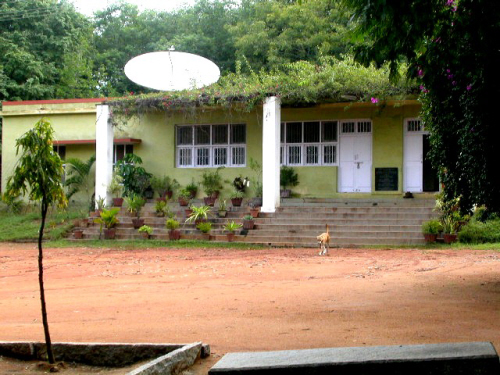
Namada Chelun Guest House
I was birding around the bungalow early in the morning and just missed my first Hoopoe, a bird I had always wanted to see.
The club members then brought breakfast and we were off to bird with Guru and several other members.
On the way, Babu ran over a sheep in a small village and soon most of the villagers and my Indian friends where involved in heavy bargaining about compensation to the owner. If we had been alone the price would have been at least 4000Rs for a foreigner, but in the end the owner settled for 900Rs but kept the carcass. It just proves that Birdingpal is not just about the birds.
We birded the plains of Mydenahalli and I finally got my first Hoopoes (two of them). In this small sanctuary we saw several flocks of Black Buck Antelopes and here was also a typical example of how difficult it is to protect wild life in India. Even with permanent guards in the park, people were bringing their life stock to graze and they did not seem to pay much attention, when asked to leave. As soon as the guard turned his back they returned.
Returning to Tumkur we passed many small silk worm farms and stopping by one we where invited in to see how they raised the worms.
Later we stopped at a mosque, so Babu could attend and I was invited into the grounds and soon surrounded by boys offering sweets and wanting to know my name and where I was from.
At the guest bungalow food was again supplied by the club members. Later we gathered with members and Murthy, a former club president, gave a presentation about the clubs history. WANC was founded in 1983 to promote awareness about local wildlife and fauna and is heavily involved with educating school children about the importance of protecting nature. To my knowledge also the only Bird Club in the world offering professional snake removal from local homes and businesses and then relocating them in suitable habitat. They teach members how to handle snakes, and remember, they have some pretty poisons ones in India. I was impressed. Income from this service is used to take poor school children to camp in the Devarayana Durga Forest. I also made a short presentation about the history and goals for Birdingpal and I presented each of
the members with an OFO pin (my club here in Ontario) and a Birdingpal cap.
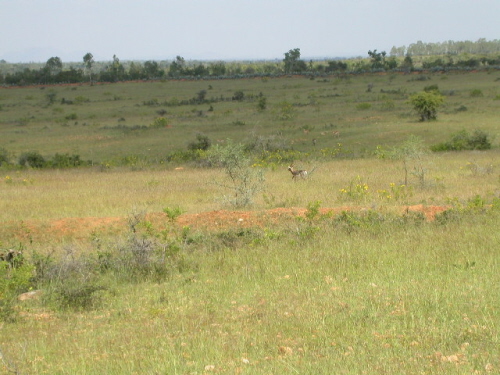
Mydenahalli Black Buck
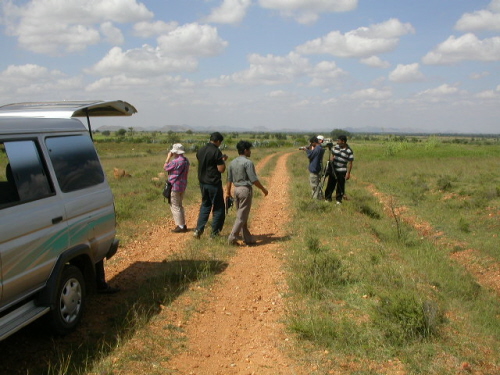
Birding with some of the WANC members
Left early in the morning with Guru and we stopped to check out a small lake for birds. Then the local people showed up with two men armed with very old single bore shot guns (or they could have been muskets). They were not hunting us, but wild boars. Watching them for a some time trying to get the boars out in the open, we finally decide that the odds were with the wild pigs and continued our journey to the Temple Hill where I saw an Egyptian Vulture, the first and only vulture during the entire trip. Does this tell you something about what happens when chemicals or drugs are used with out any consideration to the long term consequences?
This is a time for festivals with both Ramadan and Diwali taking place and I was invited to Murthy’s home for lunch. Having just been elected President for the Jaycees of India, he is a busy man, but still found time to entertain and his wife Geetha, also a birder, served a delicious meal. In the evening I was invited to visit Ameen’s parent’s home were the family had lived for the past 200 years. Again we were served a delicious meal and I do not understand how Indians can eat all that food and still remain mostly slim.
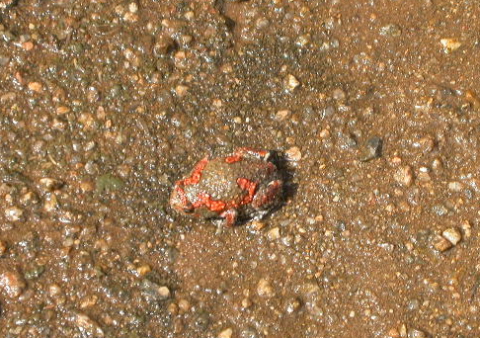
Painted Frog (Kaloula pulcra)
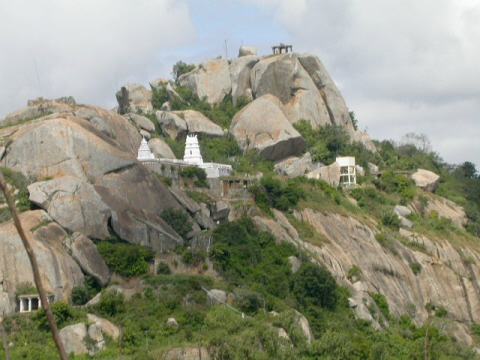
Temple Hill
Guru accompanied us to Bangalore and on the way we stopped at Temple hill to look for Yellow-throated Bulbul(Pycnonotus xantholaemus) a new bird for me. We found them.
After arriving in Bangalore I check into Pal Viceroy Hotel www.paihotels.com/ a comfortable and well appointed establishment. Since I was not able to find an ATM machine in Tumkur, where I could get cash, the first priority was to find a machine to withdraw monies from my bank account. You will find many ATM machines all over, but most will require a credit card to get money for a high fee and interest. It’s bad enough that my bank charges $5 Canadian each time I draw out some of my own money. Then on to an internet café to check mail and contact the family at home. This is the first time since Goa I have been able to withdraw money and get on to the internet. I had an excellent dinner at the hotel and for the first time since Goa, a chance to catch up with BBC world news.
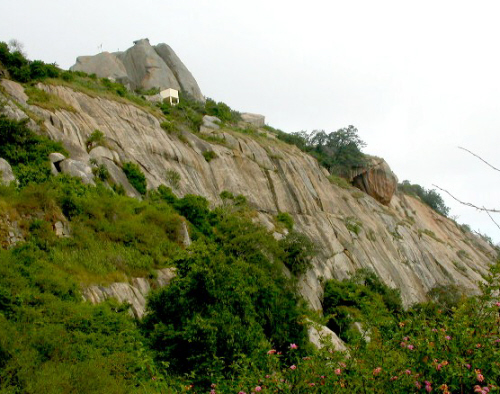
Yellow-throated Bulbul habitat
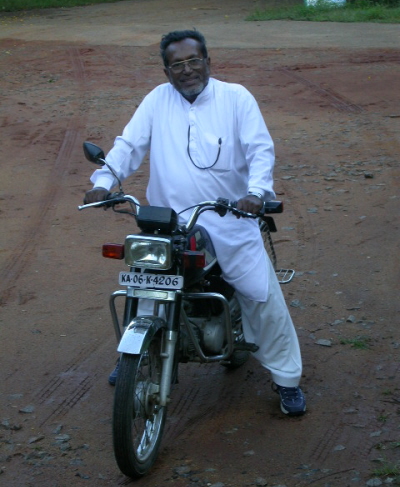
Ameen's father stop by to say good bye
JN Prasad, a local Birdingpal and a very experienced birder, came to the hotel in the early morning for a trip to Nandi Hills. On the way, we stopped at a temple for Lord Ganesha and the guard allowed us to enter to take pictures. To prove India is a wine-producing country, we passed several vineyards before we started to clime the hills. When we reached the top, it was quite cold and very misty, but we still managed to find birds. Even the monkeys were huddling together to keep warm.
Back at the hotel, I had a note from a local paper asking for a interview for an article about Birdingpal. Unfortunately, it was quite late when I got back and as I was leaving early the next morning, Birdingpal did not make it into the paper headlines.
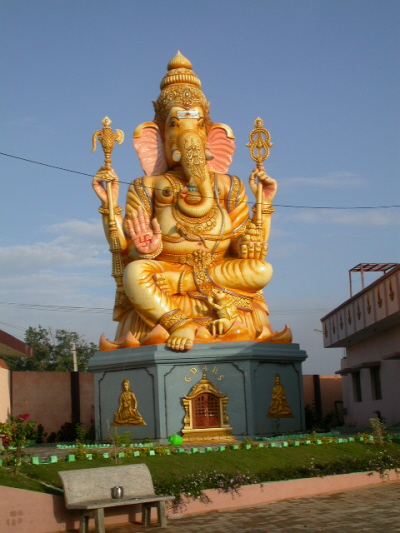
Temple to Lord Ganesha on the way to Nandi Hills
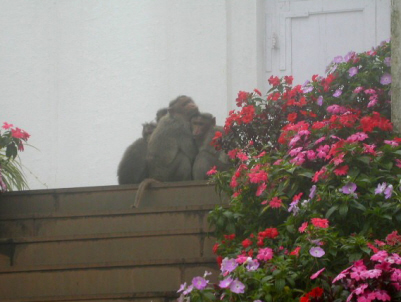
Togetherness keeps you warm
Only four hours drive to Mysore, so we stopped on the way at one of the many reservoirs to bird for waterfowl. We saw Black and Black-Headed Ibis, Open-billed Storks and many roosting fruit bats to name but a few sights. We also visited a Spot-billed Pelican roost located in a small village, where the villagers have been taught to protect the birds. A small boy engaged himself as our guide, but was soon accompanied by several other boys eager to take over. I made sure to slip the first one 50Rs without the rest noting it. Hopefully he took all the money to his mother.
In Mysore I stayed at Hotel Dasaprakash Paradise www.indiatravelite.com/accommodations1/paradisemysore.htm
located away from the heavy traffic and air pollution downtown and it’s reasonably priced, with a good restaurant.
Dr. Prashanth a Birdingpal called with directions to the BR Hills so all is set for tomorrow morning.
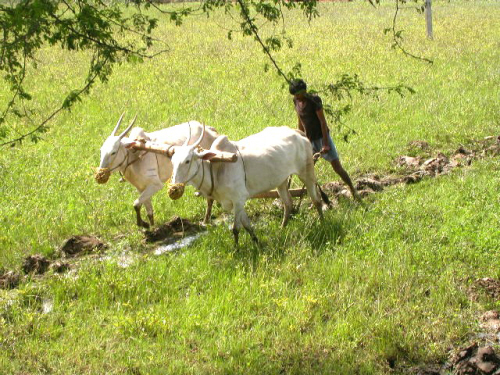
Preparing the rice paddy
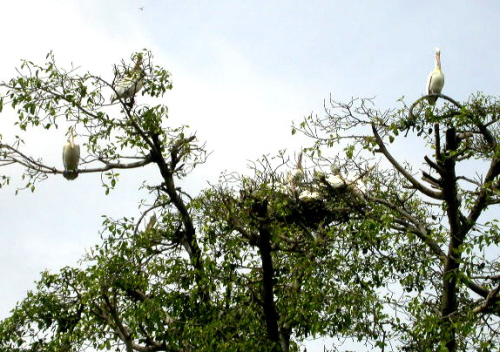
Nesting Spot-billed Pelicans
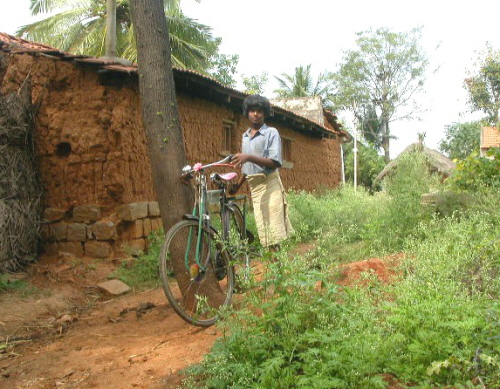
Do you think he gave the 50Rs to his mother?
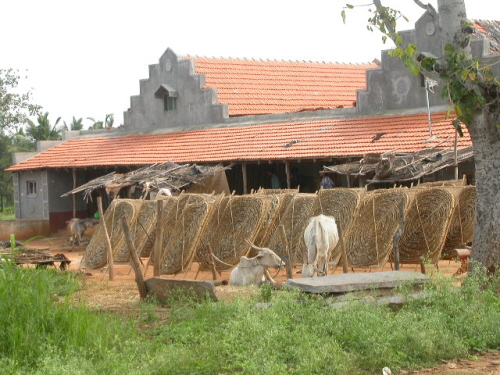
Silkworm farm

Silkworms
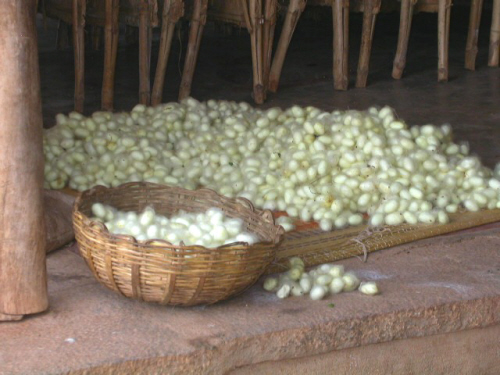
Silkcocoons
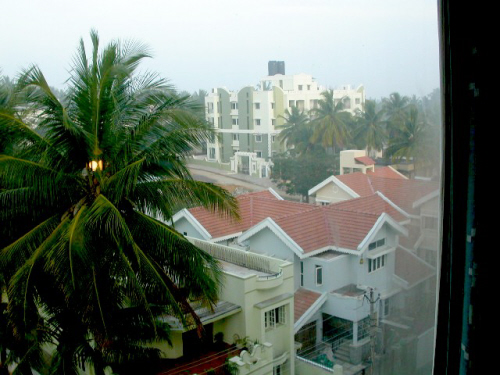
Mysore's skyline
When I first started to plan this trip Prashanth invited me to visit him at his hospital located in theBiligiri Ranga Hills (Elevation 3000m), where he cares for the local Soliga tribe. Checking with the local police, he was told that under no circumstances would foreigners be allowed to visit, since they did not want any incidents! Even after contacting the highest level of forest management there was no way. I did a little research and found out that a notorious bandit Veerappan Muniswamy had for 20 years, managed to elude police and army, killing more than 100 people and poached many of the wild elephants and illegally cut precious timber trees in Tamil Nadu, Kerala and South Karnataka. I guess I can understand why the authorities were not too keen on visitors. About a week before I left on my trip, I happened to read a European news paper on the internet and noticed an article about this famous Indian bandit and some of his gang finally being ambushed and killed in Tamil Nadu.
I emailed Prashanth right away with a copy of the article asking him if this is the same person who had made all the difficulties in visiting him. It was the same one, and within a few days we had permission to visit the Wildlife Sanctuary and his hospital.
I also checked B R Hills Wildlife Resort www.nivalink.com/br
before being invited to stay with Prashanth, but was informed that no foreigners where allowed to stay with them. I assume this is now possible.
We had a bit of problem when we arrived at the guard house to the park, since the guard did not know anything about foreigners visiting the hospital. After some negotiation Babu managed to convince him that it was OK, but I had to sign in and give my name, address and reason for visiting plus taking a picture of the guard. Later, Babu told me he had slipped him 50Rs, the first and only time such a thing happened during the trip. Arriving at noon, Prashanth was not there, since he had been called away for an emergency and would be back as soon as possible.
Founded by Dr. H. Sudarshan, who had lived and worked with the Soligas for many years to improve their living conditions, the compound is not only a hospital but has a boarding school for tribal children living in the forest, facilities to process honey and other natural products gathered by the people and a printing plant.
Waiting, the school staff invited us for lunch with 480 kids and 20 teachers in a large communal room. I was invited to sit with the kids seated in rows on floor mats waiting for their meal. In all likelihood we were the first foreigners most of the kids had everseen, so we were getting a good looking over. Every one was quietly waiting for the food and when it arrived all ate everything. Not like in our schools, where half the junk food is wasted and the noise is overwhelming in the cafeterias.
Shortly after Prashanth arrived, and together with the local pharmacist Basappa, we went into the forest to do some birding. There were plenty of birds and many fresh bear signs since they are common here in the hills.
I was invited to stay in Prashanth’s quarters and since there were no real facilities to buy food we brought our own provisions. Since Prashanth is a bachelor, he had warned me before that he was not into cooking.
Wev were in bed early since we planned to start birding at sunrise the next morning.
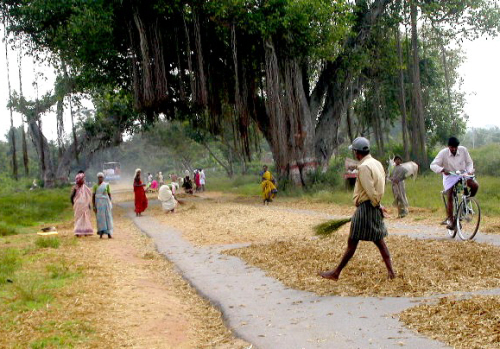
Threshing the easy way
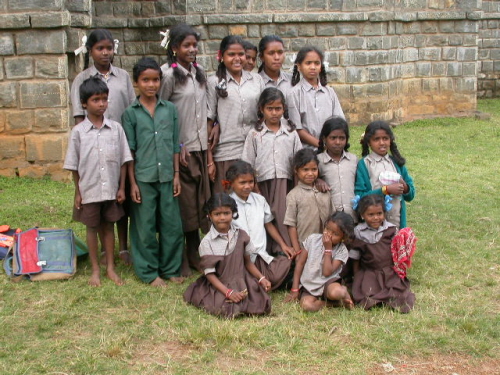
Some of the Soliga kids I had lunch with
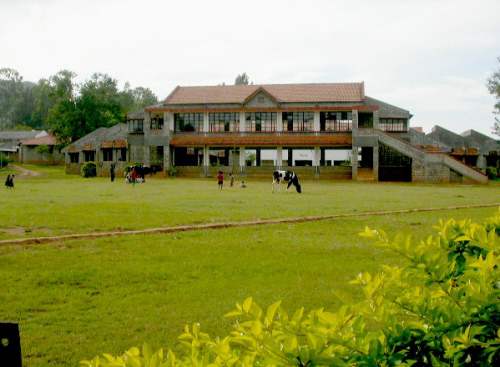
The school yard
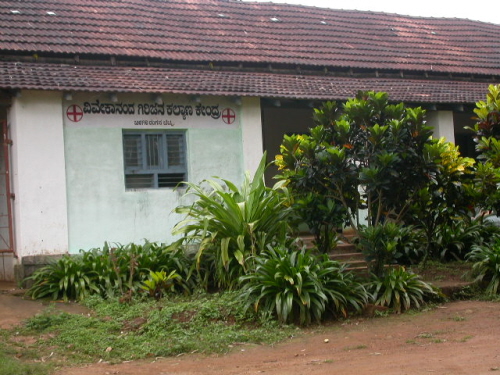
Vivekananda Girijana Kalyana Kendra clinic
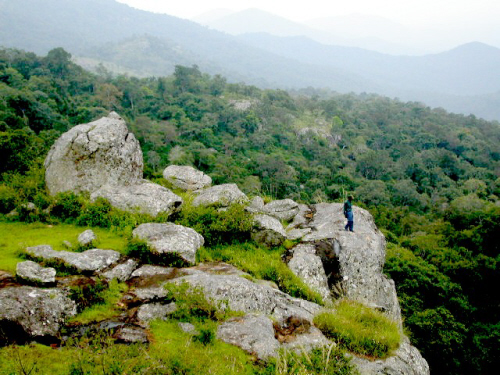
View from the hills
After a simple breakfast, we were off birding. The first stop was a shade coffee plantation, which is a forest with tall trees (many of them with pepper vines growing on them and also harvested) and the coffee bush is growing on the ground. The birdwatching was pretty good and I got my first Pompadour Green Pigeons.
The owner, a close friend of Prashanth, invited us into his house for coffee and to see how the beans are manually
processed. Women first remove the fleshy part by hand, then they are washed and laid out to dry in the sun. The hard outer shell is removed using a hand operated machine and the beans are ready to be roasted or sent to market. Certain times a year the plantation also collect Civet beans the rarest and most expensive coffee in the world, selling for about US$1400 per kilogram. Palm Civets will gorge on ripe coffee fruit at night, but since they can not digest the hard bean, they pass right through them and are collected on the ground and processed.
For lunch we went to a local restaurant, where for the first time food was served on banana leaves. No problem with recycling there.
Late in the afternoon we birded a small lake and the road sides. Babu was supposed to pick us up just before it got dark, but no Babu. This was wild forest with elephants, tigers etc. seen on a regular basis and there was no street lights. We started to walk back to the hospital but after a half hour, we were picked up after Basappa, who had walked in the opposite direction, found a very nervous Babu waiting at the wrong place. We decided to go for a night drive, hoping to see some large wild life. But, still no elephants or tigers, just Gaurs (a large wild ox which the Indians call a bison) standing in he forest close to the road, and some small rodents.
Back at Prashanth’s quarters we had something to eat and when a couple of his friends visited, an interesting conversation over a glass of
Scotch.
After I went to bed, Prashanth and his friends watched “Fiddler on a Roof” on a laptop computer.
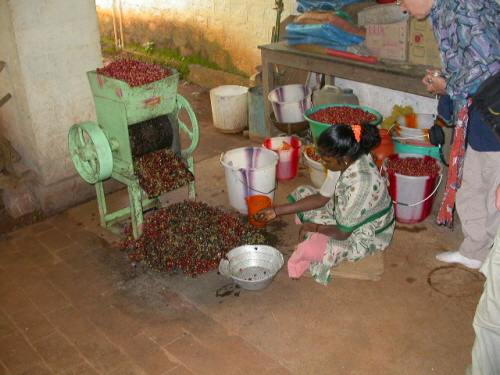
Preparing the coffee beans
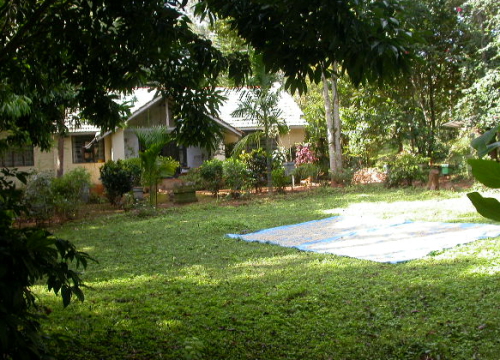
Drying coffee beans in front of the Plantation house

Dr. Prashanth: a great Birdingpal
Said goodbye to Prashanth and thanking him for his hospitality and being such a great Pal, we left early in the morning, since we planned to bird on the way to Nelliyampathy Hills. Walking ahead of the car, we saw the first Grey Junglefowls, wild boars and deer but still no elephants, just plenty of fresh dung on the road. This was probably a good thing, since I have been told how dangerous pachyderms can be(even my doctor in Toronto had warned me about how dangerous they could be). A little later on I did meet a 60 year old domestic elephant in one of the small villages we passed, though that's not the same as a wild one. It was slow going because of bad roads and many small villages with the usual traffic jams on the main streets, plenty of people and ever present air pollution.
Driving into the state of Kerala, the roads seemed better and signs in English are quite good and we find the way to Nelliyampathy without too many problems. Located approximately 2000m abouve sea level, it’s a long, narrow and winding road and Babu is delighted, since he can use his horn at every turn. When driving in India the first rule is the bigger vehicle always has the right of way, but driving on winding roads the bigger sounding horn usually got the right of way. Babu was in seventh heaven, since he had a switch on the dashboard, which allowed him to change the horn sound at his pleasure, and he won most of the road battles.
We stayed at the Holiday Resort 04923-246357 which is not really a resort, but was comfortable and for 645Rs for a double room, the price was right. The restaurant service was slow but the food was good and cheap.
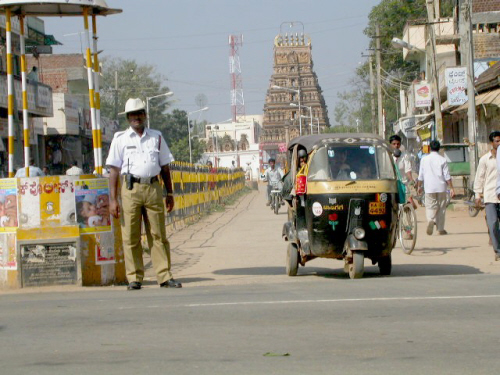
Traffic Cop on the way to Nelliyampathy Hills
The Nelliyampathy Hills were covered in forest up to the plateau where large tea plantations took over, so we decided to get up early in the morning and walk down the road to check the birds there. Watching a Black Eagle(a nest robber) as it is scanning the hill sides near a small temple, the priest, who lived there, greeted me and when I told him I was birdwatching, he invited me into the grounds of the temple to show me the birds he sees every day. He was an interesting man who has visited many parts of India. A couple of hours later Babu, picked us up and we drove back up to the top again.
This is one of the few places where the local Pal was not available to help out, but one of the hotel staff told me that if we drove about 8km to the small village, Victoria, we would find the last virgin forest and excellent birding. The locals showed us a road and “assign” an old bethel chewing man as our guide. The road was very rough and eventually ended at the top of the hill with the ruins of an old church.
Walking back, I made the mistake of not having my hiking boots on and the leaches were fierce, but the birding was excellent. Returning to the hotel I found several leaches inside my socks and they were having a feast. Took me an hour to stop the bleeding. It looked worse than it was, since there is little chance of infection but I had to go to the front desk for first aid. That’s the one and only time I had such problems during the trip.
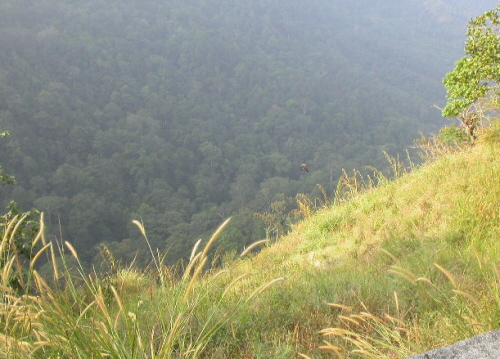
Black Eagle the nest robber
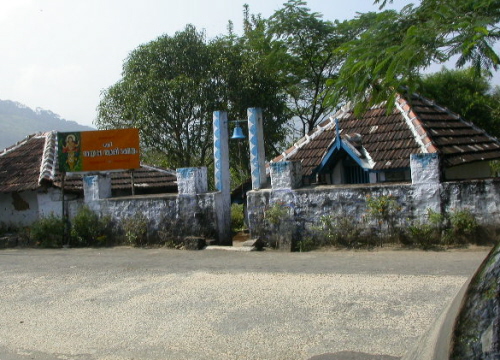
Hindu Temple
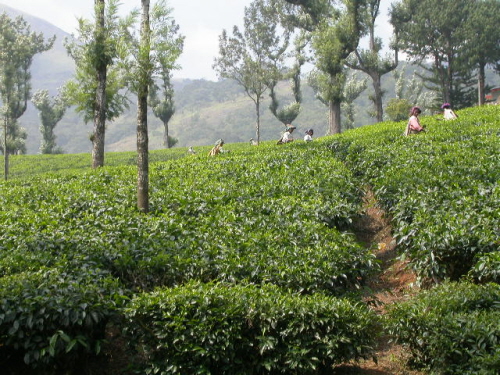
Tea Plantation
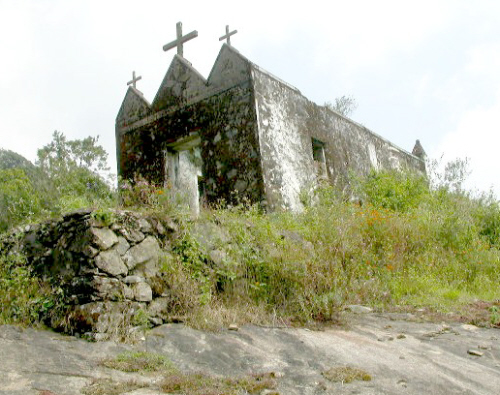
Old Church on top of the hill in Victoria
I left very early to go birding in Victoria but this time, I wore long pants and two pairs of socks and my boots. Again the birding was exellent and I a dded a Rufous-Bellied Eagle to my list making it 10 different eagles so far. I did not see the Great Hornbills we could hear clearly. Getting back to the car I found three leaches in my boots between my extra pair of socks, but this time they did not dine on my blood.
This was very much a vacation place in season with clean air and pleasant temperatures. Several of the plantations have resorts as part of their operation and I visited Tropical Hill Resort and Green Land Resorts after lunch. They have good facilities, but the price was also two to three times greater than, where I was staying. If you wanted to relax and spend a few days, this is a place well worse visiting. At Green Land Resort I ran in to a group of students and as soon as they saw me they came running up. I had now learned to ask kids “what’s your name and where are you from” before they ask me, but I had to take a number of
pictures with them and I think I was well under way to be known in many schools here in India.
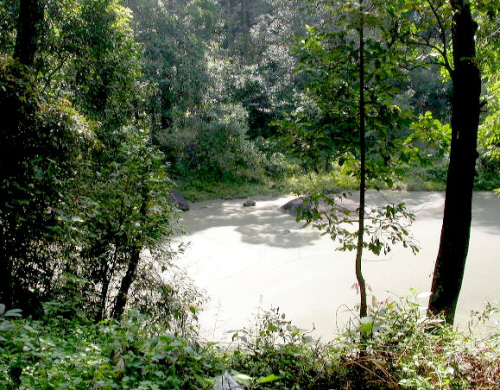
Birding habitat in Victoria
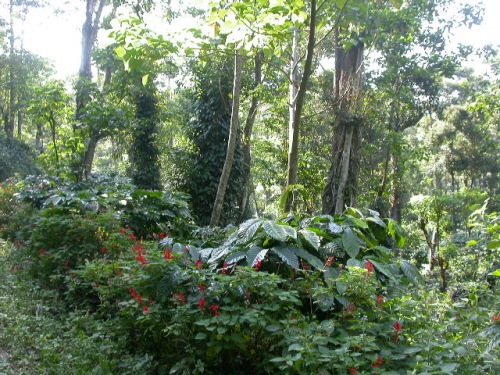
Pepper plants in coffee plantation
Leaving early for Kochi, we stopped at a trail half way down the Nelliyampathy Hills to bird. We did not see a lot of birds but had a very good look at Giant Squirrels. Still many leaches but I was prepared and they were not having me for breakfast. At the bottom of the mountain we stop to check out Pothundi Dam and reservoir but saw no birds at all.
The roads were good and we arriveed in Kochi around 1300 and found the Wood Manor Hotel www.ashextourism.com/hotelsresorts/kerala/woodmanor.html
It was conveniently located, reasonably priced and had a good restaurant.
I had problems accessing my email but manage to contact my son in Canada to get him to check with my server.
I also had my first beer since Tumkur and an excellent dinner. Kozhi Varutharacha Curry Chicken cooked in thick coconut gravy and I can highly recommend it.
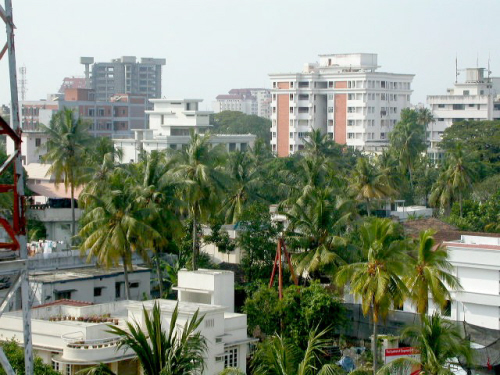
Kochi skyline
This was one of the few places I did not have a Birdingpal (since I returned from the trip I now have one) and I decided to play tourist and go on a boat ride into the Tidal Back Waters. There were few birds but I visited a place where they made calcium from shells, and a place where women made cords from coconut husk by hand.
When I returned to the hotel I had an email and fax from my son. Some techie in Toronto decided to block all access to my email outside Canada. It was now fixed and I spent the afternoon answering many emails and checking up on news.
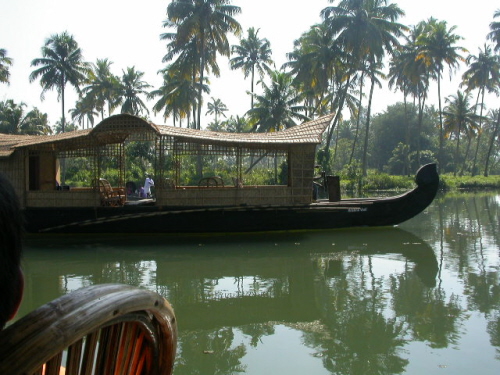
Boating the Back Waters
After a late breakfast, Babu and I drove to Fort Kochi which was first constructed by the Portuguese, then the Dutch took over and later the British so it looks like an old European city. First we visited the famous Chinese fixed cantilever fishing nets, then the old Jew Town and the oldest church in India. Kochi also has a large harbour and Navy Station, but you won’t find too much birdwatching there except for crows.
It is a mordern booming city and well worth a visit.
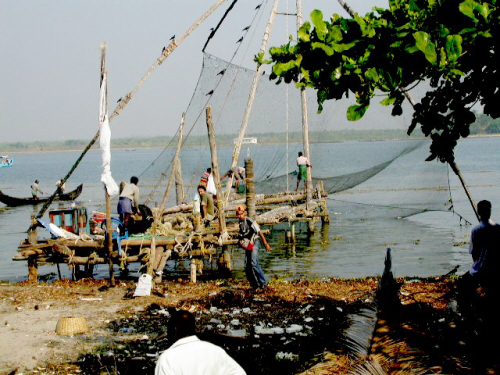
Chinese Fishing Net in Fort Kochi
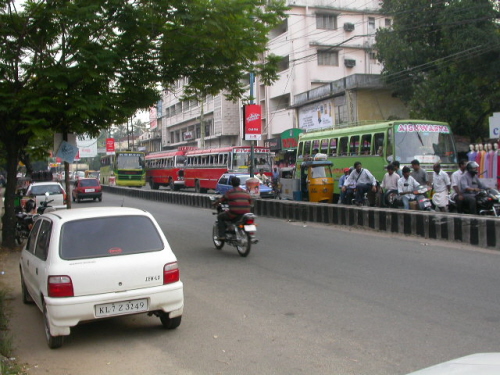
Rush hour in Kochi
Leaving early in the morning we drove to Thiruvananthapuram the last stop in India on probably the best highway during the whole trip.
I was staying at the Wild Palms Guest House www.wildpalmsguesthouse.com/
located close to downtown in a residential area away from the noise and air pollution. It was very pleasant with friendly people and great food served in the common dining room. The owners ate there too and told me their daughter married a Canadian and now lives close to Toronto
Thiruvananthapuram (City of Sacred Serpents) was a pleasant city but it may soon have all the problems of too much traffic and air pollution if they do not try to control it.
After lunch we drove to Veli Park, which contained some interesting sculptures made by Kanai Kunhiraman a local artist. There were lots of school children in the park and on the beach but few birds.
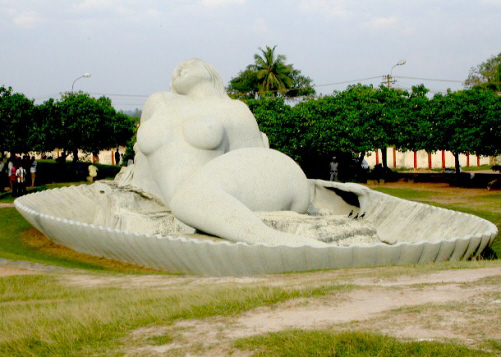
Kanai Kunhiraman sculpture
In the morning we visited Varkala north of Thiruvananthapuram. It was a busy resort town on the Arabian Sea, but strictly for tourists. The beach was below the many restaurants and shops and I could see Dolphins playing in the surf and Brahminy Kites flying over the water, but that was all except for the ever present crows.
Visited the 2000 year old Sree Janardhana Swamy temple and drove back following the coast line with many small fishing villages until Babu finally talked me in to returning to the highway.
That evening Christopher, a local Birdingpal, met me at the hotel and over a cup of tea we planned a trip for the next day.
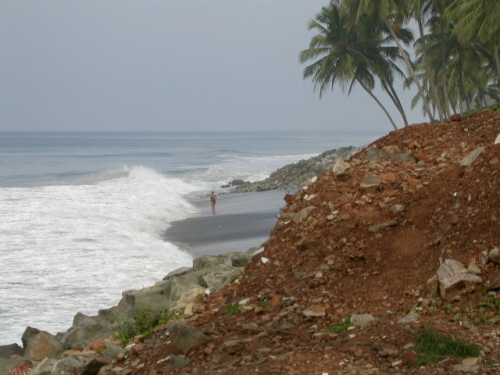
Varkala beach
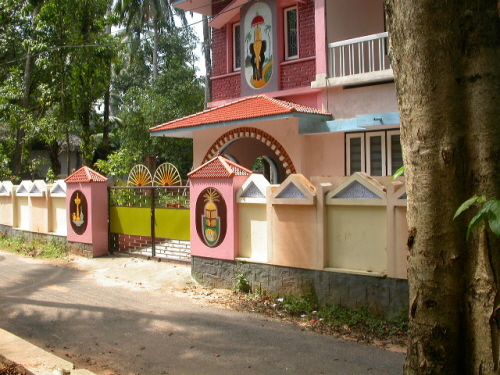
Villa on the way back to Thiruvananthapuram

Do you know what party the people in the villa support?
We got a late start, since we were waiting for Gordon, a British Birdingpal staying at one of the beach hotels, but he was not able to obtain transportation that early in the morning and we left for the Peppara Dam without him. Excellent birdwatching and breakfast at the canteen for the staff of Kerala Water Authority (the govt. department which takes care of the dam as well as the supply of drinking water to Trivandrum City), where I had the spiciest meal during the whole trip. Good thing I can eat really hot food, otherwise there would have been no breakfast. Here we met Mr. Narayanan Mash, a very interesting gentleman, who is a freelance community service man, helping tribal people living in and around the park, in negotiating their problems with officials and others. This time, he is mediating with the Scientists of Tropical Botanical Garden and Research Institute (TBGRI – an autonomous research institute located about 30 km from Peppara) for identifying the feasibility of a project on involving tribal people in the cultivation of certain medicinal plants within the tribal settlements (located inside the park)
for supporting the tribals income as well as to promote in situ conservation of local herbs. When we where there a group of scientists arrived from the TBGRI and they were going to a settlement inside the Park to assess the feasibility. The actual park boundary starts from the Dam and extends towards the Eastern Hills up to the upper ridge. Except in the Dam part of its boarder most of the interiors are in good condition with a wide range of habitats and with many endemic and rare species. Later we continued up into the hills (about 1500m elevation), where I had a great look at a bird new for me, a Crested Hawk Eagle. We looked for grassland birds at the summit, but had to give up since it started to rain and we decided to return to the city. There Christopher was kind enough to help me with shopping for silk and cashmere wool to take home with me.
Later, checking my email, I got the first Birdingal in Kochi; too bad he did not sign up when I was there.

Christopher(left) a local Birdingpal and Mr. Narayanan Mash
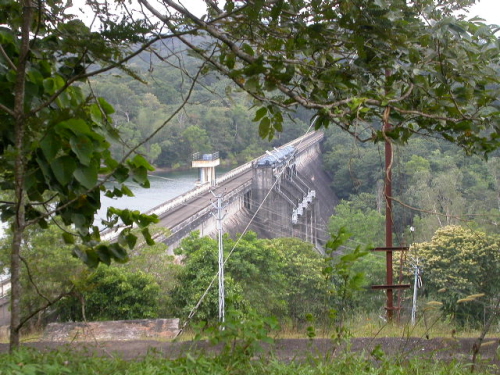
Peppara Dam
This was the last full day in India and well worth the three weeks I traveled down the road with Babu. I was having a cup of tea and reading the local paper on the balcony when I saw Fruit Bats returning late to their roost, and several beautiful Sunbirds feeding in the trees around the guest house.
Ameen’s farther, Mumeer arrived from Tumkur this morning to take the car back, and after a cup of tea we decided to drive south to Kovalam.
Kovalam was a beautiful resort city located on the edge of the Arabian Sea Here there were no hawkers and just a few good restaurants on the beach, but it was also fairly expensive. I think I had the most expensive lunch during the whole trip, but well worth it and the company was great. Muneer told me he will visit his son in Canada next spring and I am looking forward to returning his and his wife’s hospitality in my house.
This was the Hindu festival of lights and the guest house and all the homes are decorated with small oil lamps and candles when it got dark and it made a great evening walk after dinner.
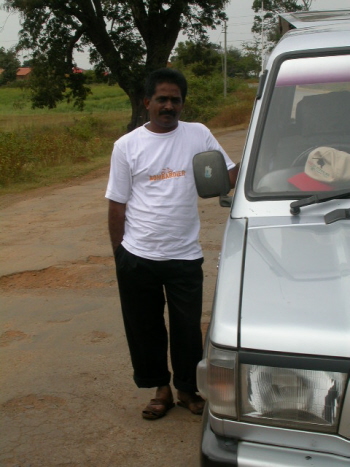
Babu the driver and now a birder
Babu drove me to the airport to catch a flight to Sri Lanka. I said goodbye to him (I will miss him) and Muneer.
Knud Rasmussen
Toronto, Ontario, Canada
You can continue reading about my trip to Sri Lanka here
by Birdingpal Animish Mandrekar
I and my birdwatcher friend Harshal Marathe visited Dandeli wildlife Sanctuary on March 2005 for 3 days. This Mixed Deciduous forest greeted us with a heavy shower and a
light hail storm. In our 3 days trip we could see and hear about 113 species of birds, few mammals and reptiles.
We reached Kulgi and were treated by the sight of Vernal Hanging Parrot feeding on Guava fruits. Since we had reached late in the evening we could hardly spot few 25 species of
birds.
Next day morning we started our day pretty early and were amazed as we stumbled upon a pair of Hill mynas. As we followed the pair, we found they were busy in their parental
duties. The nest was a burrow in a tall tree which was frequently visited to meet the voracious appetite of the chicks. It was the first bird (probably female) who spend the
major time in the nest than the other. There after next two days it had become a religious affair to visit the nesting site. The nest was very close to the road going to Nagzari
falls, in the valley, next to camp site. After such early morning feast we headed to the Bamnallai Dam. We saw about 64 species on the road and around the dam. Star sighting for
me were Lesser Adjutant Stork, Black-lored Tit, Blue Faced Malkoha, Dark-fronted Babbler and Crested Treeswift.
On our trip we saw 3 species of Orioles as well 7 species of Woodpeckers, all listed below. Icing on the cake, on the same day, was hot dosas and Sizzling Fish fry was served by
Amma in a small hut near the dam. If anyone wishes to see the dam one must have an entry pass which is issued at Ambikanagar, a village next to Kulgi.
On the next day we headed towards Nagzari valley, a thick semi evergreen patch of forest which was a very promising trip. The feast started with Malabar Pied Hornbill and
Pompadour Green Pigeon. This was just the start…… Speckled Piculet, Chestnut-headed Bee-eater, Black-crested Bulbul, Black Bulbul, Indian Pitta and Black-lored Tit were the
star sighting as we descended the valley. The valley had thick vegetation, with a perennial stream flowing through it. As expected the presence of White-bellied Woodpecker as
found in the valley.
After having some grub we started climbing up, and we startled by White-throated Kingfisher as it left its nest. At the end of the trail we came across a pair of Velvet-fronted
Nuthatch, which was just 20 feet away from us. All the details like black tipped red beak and black strip behind the eye was clearly visible even without the binoculars. The day
ended with the sighting of Large tailed Nightjar.
On the last day we had only morning session with us, so we decided to visit the near by waterhole which was across our camp site near the timber depot. The waterhole was teaming
with activity and I spotted Cinnamon Bittern a lifer for me. Before winding up we came across the nest of Chestnut-tailed Starling and Greater Racket-tailed Drongo.
Also I would like to mention the sighting of Emerald Dove pair feeding on ground. Usually in Borivli I have seen this bird in flight, so I regard this as one of the best
sightings.
Finally at we bid farewell to the sanctuary with the magnificent sight of Vernal Hanging Parrot.
Mammals:
Malabar Giant Squirrel, Black Naped Hair, Three Striped Squirrel, Common Langour and Spotted Deer.
Reptiles:
Flying Lizard, Forest Calotes, Garden Calotes and Checkered Keel back
Butterflies:
Plain tiger, Common Crow, Immigrant, Glassy Tiger, Lemon Pansy, Blue Pansy, Sword Tailed, Leopard, Commander and many more.
List of Birds in Dandeli:
Grey Junglefowl
Indian Peafowl
Speckled Piculet
Rufous Woodpecker
White-bellied Woodpecker
Heart-spotted Woodpecker
Brown-capped Pygmy Woodpecker
Yellow crowned Woodpecker
Common Flameback
Greater Flameback
Brown-headed Barbet
White-cheeked Barbet
Coppersmith Barbet
Malabar Grey Hornbill
Malabar Pied Hornbill
White-throated Kingfisher
Blue Faced Malkoha
Chestnut-headed Bee-eater
Common hawk Cuckoo
Eurasian Cuckoo
Asian Koel
Coucal
Vernal Hanging Parrot
Rose-ringed Parakeet
Plum-headed Parakeet
Malabar Parakeet
House Swift
Crested Treeswift
Spotted Owlet
Jungle Owlet
Large tailed Nightjar
Pompadour Green Pigeon
Spotted Dove
Emerald Dove
White-breasted Waterhen
Red-wattled Lapwing
River Tern
Black Kite
Brahminy Kite
Crested Serpent Eagle
Shikra
Oriental Honey-buzzard
Osprey
Little Grebe
Little Cormorant
Little Egret
Great Egret
Intermediate Egret
Cattle Egret
Pond Heron
Grey Heron
Purple Heron
Cinnamon Bittern
Black-headed Ibis
Lesser Adjutant Stork
Indian Pitta
Asian Fairy Bluebird
Golden-fronted Leafbird
Blue Winged Leafbird
Rufous Treepie
House Crow
Large-billed Crow
Ashy Woodswallow
Golden Oriole
Black-headed Oriole
Black-naped Oriole
Large Cuckooshrike
Small Minivet
Scarlet Minivet
Ashy Minivet
Bar-winged Flycatcher-shrike
Black Drongo
White-bellied Drongo
Bronze Drongo
Greater Racket-tailed Drongo
Black-naped Monarch
Asian Paradise-flycatcher
Common Iora
Common Woodshrike
Malabar Whistling Thrush
Orange-headed Thrush
Eurasian Blackbird
Tickell’s Blue Flycatcher
White-rumped Shama
Magpie Robin
Indian Robin
Chestnut-tailed Starling
Brahminy Starling
Common Myna
Jungle Myna
Hill Myna
Velvet-fronted Nuthatch
Great Tit
Black-lored Tit
Barn Swallow
Black-crested Bulbul
Red-whiskered Bulbul
Red-vented Bulbul
Yellow-browed Bulbul
Black Bulbul
Oriental White eye
Common Tailorbird
Puff-throated Babbler
Indian Scimitar Babbler
Dark-fronted Babbler
Jungle Babbler
Purple-rumped Sunbird
Purple Sunbird
Little Spiderhunter
House Sparrow
Chestnut-shouldered Petronia
Grey Wagtail
Black Headed Munia
Animish Mandrekar
Address: 304, Dattatray Bhavan,
Eksar Road, Borivli (West), Mumbai-400 103
Tel.: (022) 28914101
Email: nightjar6@yahoo.com